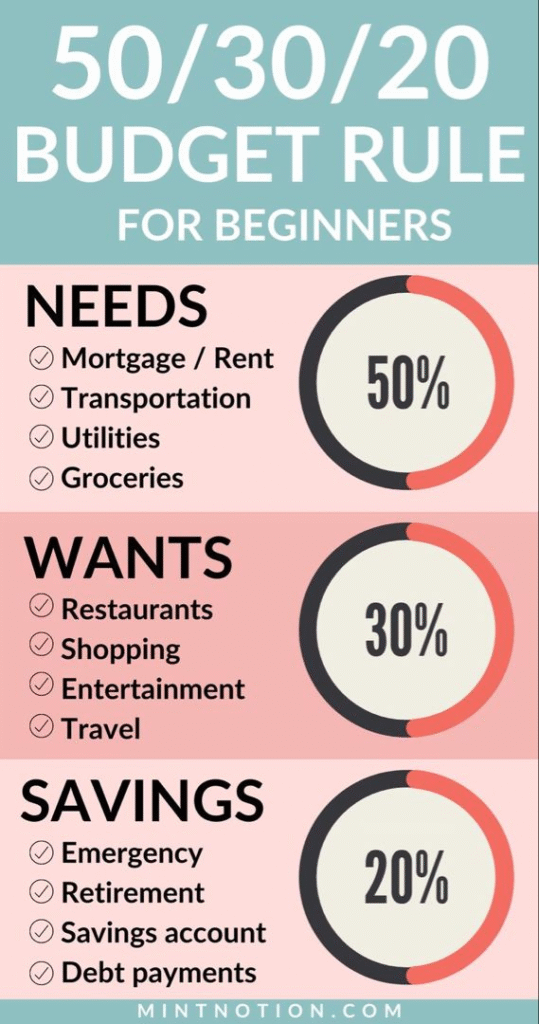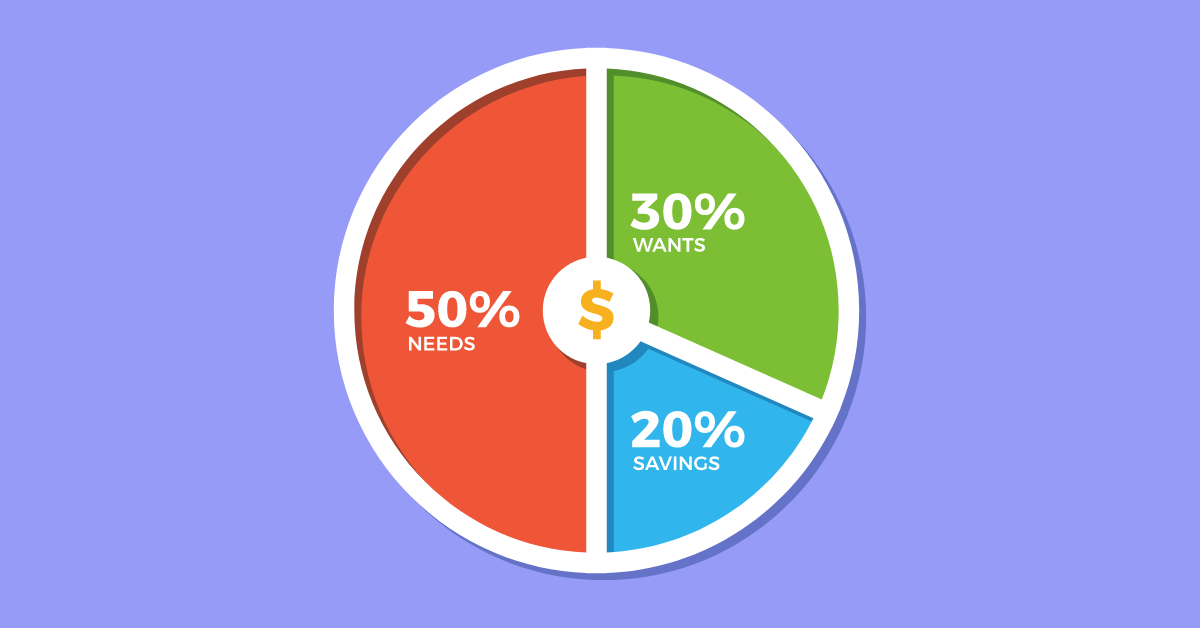Introduction: Why Budgeting Your Salary Matters in Your 20s
Managing your money in your 20s can be overwhelming, especially when you’re just starting your career. Most of us have dreams of buying a house, traveling the world, or starting a business but without proper financial planning, those dreams can stay out of reach.
Budgeting your salary isn’t just about cutting expenses, it’s about planning for the life you want. And one of the simplest and most effective methods to start is by using the 50-30-20 rule of budgeting. In this guide, we’ll break down what this rule is, how it applies to Indian salaried professionals, and how you can implement it for long-term financial success.
If you’ve been wondering how to manage your salary in your 20s in India or how to save money from your salary, this blog is for you.
What Is the 50-30-20 Rule of Budgeting?
The 50-30-20 budgeting rule is a money management framework that helps you allocate your income into three broad categories:
- 50% for Needs: Essential expenses that you must pay every month.
- 30% for Wants: Non-essential spending that improves your quality of life.
- 20% for Savings & Investments: Money you set aside for future goals, emergencies, or investments.
This rule gained popularity because of its simplicity and flexibility, making it ideal for beginners in India who want to start budgeting their salary smartly.

Why the 50-30-20 Rule Works for Indian Salaried Professionals
When you’re in your 20s, your salary might not be huge, but your expenses can pile up quickly. From rent and food to outings with friends, it’s easy to lose track of where your money is going.
Here’s why the 50-30-20 rule for salary management in India works well:
- Flexible for any salary range (whether you earn ₹20,000/month or ₹80,000/month)
- Helps balance spending and saving without feeling restricted
- Adapts to financial goals—whether you’re saving for a new phone, a vacation, or a retirement fund
- Fits Indian lifestyle expenses like rent, groceries, entertainment, family obligations, and more
Breaking Down the 50-30-20 Rule for Indian Salaried People
Let’s break down each segment of the 50-30-20 salary rule and see what fits under each:
1️⃣ 50%: Needs (Basic Living Expenses)
These are the essential expenses you must cover to survive and function daily. They include:
- Rent or home loan EMI
- Groceries and household essentials
- Utility bills (electricity, water, internet, mobile)
- Transport (metro, fuel, Ola/Uber)
- Health insurance premiums
- Basic clothing
💡 Example: If your salary is ₹30,000 per month, aim to keep your needs around ₹15,000
2️⃣ 30%: Wants (Lifestyle Expenses)
These are non-essential expenses that make life enjoyable but can be adjusted or cut if needed.
- Dining out
- Netflix/OTT subscriptions
- Shopping (non-essential)
- Vacations & trips
- Gadgets & accessories
💡 Example: For a ₹30,000 salary, you should ideally limit “wants” to ₹9,000.
3️⃣ 20%: Savings and Investments
This is arguably the most important part of your budget if you want to build financial security and wealth.
- Emergency Fund: Ideally 3–6 months of your monthly expenses
- SIPs (Systematic Investment Plans) in mutual funds
- PPF (Public Provident Fund)
- NPS (National Pension System)
- Fixed Deposits or Recurring Deposits
- Stocks (if you have a higher risk appetite)
💡 Example: ₹6,000/month from a ₹30,000 salary could go into SIPs or a combination of investments.
Adjusting the 50-30-20 Rule Based on Your Situation
While the 50-30-20 budgeting formula is a great starting point, your personal situation might demand adjustments. For example:
- Living in a metro city? Rent may be higher, so you might do 60-20-20 temporarily.
- No EMIs or dependents? You can shift to 40-30-30 and boost savings.
- High short-term goals? Temporarily cut “wants” to 10% and increase savings to 40%.
Remember, personal finance is personal. The key is discipline and consistency.

Common Budgeting Mistakes to Avoid in Your 20s
- Not Tracking Expenses: Use apps like Walnut or Money Manager to track where your money goes.
- Ignoring Savings: Don’t wait for a “higher salary” to start saving. Start small, but start now.
- Overspending on Lifestyle: That third Zomato order this week? Think twice.
- Not Building an Emergency Fund: Unexpected expenses can derail your entire financial plan.
- No Investments: Savings alone won’t beat inflation. Invest to grow your wealth.
Bonus: Tools and Apps to Help You Budget Better in India
Here are some tools popular among young Indian professionals:
- Walnut: Tracks expenses automatically via SMS
- Moneyfy by Tata Capital: Great for starting SIPs
- ET Money: Budgeting + mutual fund investments
- Goodbudget: Envelope-based budgeting system
- Google Sheets: Old-school, but customizable
Conclusion: Take Control of Your Finances Starting Today
If you’re wondering how to save money from your salary in India, the 50-30-20 rule is the perfect starting point. It’s simple, flexible, and effective, especially for young Indians in their 20s who want to balance fun with future planning.
And remember: You don’t need a finance degree to manage your salary smartly. You just need the willingness to start.
💬 Still confused about how much you should save or where to invest? Check out our detailed guide on https://savingsaga.com/how-to-start-investing-with-a-%e2%82%b925000-salary/ for actionable insights.
Start today, and your future self will thank you.

awesome content
isn’t saving 20% too less
i love w my parents so how should i use that 50%
what’s ET money?
can you give insight as of which stocks to buy for shortterm
can you explain mutual funds vs stocks
just chatgpt man
bhaiya, i’m under 18. I get 7-8k per month. Can i invest somewhere from my name or will i have to use parent’s id
good jobbbb
parent’s id
what platform should i buy stocks from, i’m a 25 yr old
but what if our living expenses are more